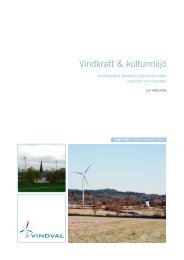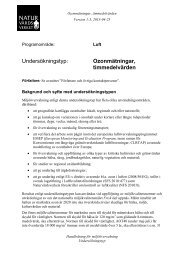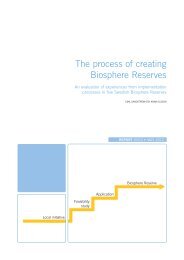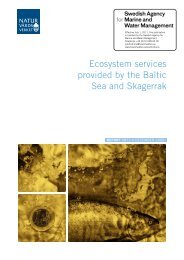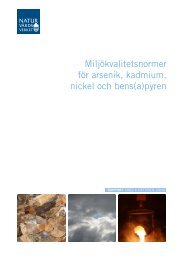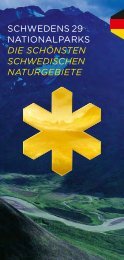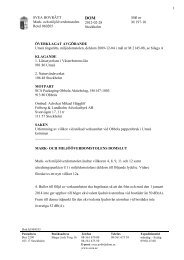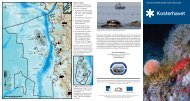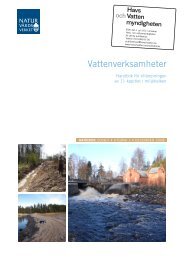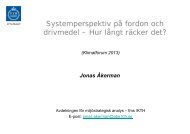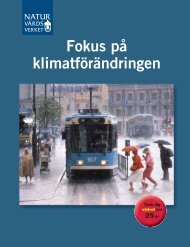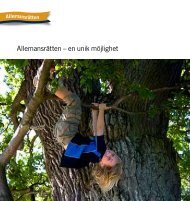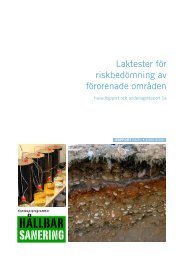You also want an ePaper? Increase the reach of your titles
YUMPU automatically turns print PDFs into web optimized ePapers that Google loves.
Summary<br />
NATURVÅRDSVERKET<br />
Rapport 5770 ● Hav i balans samt levande kust och skärgård<br />
The state of the environment<br />
The protected area has increased marginally since the last evaluation. Land areas<br />
have increased by 3 per cent and sea areas by 0.5 per cent. A further four marine<br />
nature reserves have been created. This increase has been possible partly thanks to<br />
targeted allocation increases to county administrative boards.<br />
The release of nutrients into air and water is continuing to decrease, while the<br />
effects of eutrophication on the environment are not declining as clearly. The situation<br />
for several commercially important fish stocks has been critical for a number<br />
of years now; in particular, cod stocks in the Baltic, the Kattegatt and the North Sea<br />
are threatened by collapse. There are many indications that the diminished importance<br />
of cod in the ecosystem has had multiple consequences, which may in turn<br />
have led to a regime shift in the Baltic.<br />
The incidence in the natural environment of many organic toxins has decreased<br />
since the 1970s. However, levels of cadmium and mercury in Baltic herring show<br />
no clear signs of declining. The problem with TBT from anti-fouling paint on<br />
ships’ hulls persists, despite a ban on its use.<br />
Development pressures on the shoreline are increasing, particularly near big<br />
cities. Oil shipments from Russia are the biggest single reason for the growth in<br />
merchant shipping, leading to an increased need for supervision and control.<br />
The evaluation<br />
Interest in the efforts to protect the marine environment has grown since the last<br />
evaluation. Sweden now has a national strategy and an action plan for the marine<br />
environment. Various forms of collaborative bodies such as SamHav have been<br />
established. Increased resources are being allocated to marine environment efforts.<br />
It should be remembered, however, that it takes time to correct deficiencies.<br />
We urgently need to improve our knowledge about the marine environment, to<br />
improve coordination between various government agencies and players, to develop<br />
forms of management, and to try to resolve conflicts of interest. One example<br />
of a conflict of interest is the fact that the share of unaffected shoreline continues<br />
to diminish rapidly in the vicinity of large metropolitan areas, despite restrictions<br />
on construction and development. Another example is the effects on biodiversity<br />
of fishing pressures.<br />
Since our seas border several other countries, international efforts are important.<br />
Many of the big threats can only be dealt with through joint efforts. One example<br />
of this is the work to draw up an Action Plan for the Baltic within HELCOM<br />
(the Baltic Marine Environment Commission). One weakness in this context is that<br />
international conventions often have recommendations only, which are not legally<br />
binding.<br />
12



